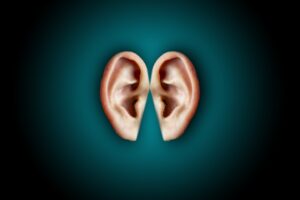On This Page
-
- Why hearing loss increases your risk of falling, and what to do about it
- Here's why you may want to try auditory training to help with hearing loss
- Parts of the ear
- Bones of the middle ear
- How hearing loss can occur
- Mayo Clinic Minute: What is hearing loss?
- Types and causes of hearing loss
- By the time we reach 65, one in three of us will have a hearing impairment.
Why hearing loss increases your risk of falling, and what to do about it
Why Hearing Loss Increases Your Risk of Falling: Diseases that impair the blood supply to your ear's cells over time can wreak havoc on hair calls. Smoking: Smoking not only increases your chance of hearing loss but also harms the hearing of those who inhale your smoke. Labour in a noisy environment or participate in noisy hobbies: Factory work, construction, military duty, hunting, and musical performances all have the potential to cause hearing loss over time.
Here's why you may want to try auditory training to help with hearing loss
A cochlear implant is composed of two components: a microphone worn behind the ear and an ear receiver that transmits electrical information to the auditory nerve. The prognosis for individuals with Snhl varies significantly depending on the severity and origin of the hearing loss. Snhl is the most prevalent type of irreversible hearing loss.
This study aimed to determine the mechanism of hearing loss (hl) in Paget's disease of the bone. The current study was a systematic, prospective, controlled set of clinical tests designed to test the notion that there is a basic process that is universal for hl in Paget's disease of bone and to obtain a greater understanding of the illness's auditory and otological dynamics. The specific queries were: 1) is the mechanism cochlear or retrocochlear? And 2) is the cochlear capsule's bone mineral density related to hearing level?

Ear Wax Removal Kent
Conductive hearing loss (issues with sound transmission to the inner ear) and sensorineural hearing loss (problems with the inner ear or cochlea and the auditory nerve that connects the inner ear to the brain) are the two primary kinds of hearing loss. Sensorineural hearing loss (snhl) happens when the auditory nerve and the cochlea's small hair cells are damaged. Sensorineural hearing loss is most frequently caused in children by inner ear defects, genetic differences, jaundice (or yellowing of the skin or eye whites), and viral infections of the mother during pregnancy.
To begin assessing auditory function, acoustic and audiological markers must be analysed, including the performance of a tone threshold audiogram. Many types of audiometric curves can be noticed on the tone audiogram, depending on the frequencies at which hearing is affected. The modern method of diagnosing auditory organ diseases is to conduct a multidisciplinary assessment of the patient. To ascertain the origin of the disease and to develop the most efficient therapeutic strategies, the function of the auditory and vestibular systems is evaluated, the cardiovascular, excretory, endocrine, and hepatic systems are evaluated, and the blood coagulation system parameters are analysed.
Parts of the ear
You are familiar with the term “hearing,” but what is “hearing loss”? Hearing loss or impairment happens when one or more components of the ear(s), the nerves that connect the ears, or the area of the brain that controls hearing are damaged. “Impairment” refers to a condition in which something is not functioning correctly or as well as it should.
According to the VA, about 2.7 million veterans get disability benefits for hearing loss or tinnitus (ear ringing); however, the actual figure may be more significant. This suggests that other veterans are not receiving VA disability benefits due to hearing loss. Veterans who served after 9/11, in particular, have a fourfold increased risk of hearing loss compared to civilians.
Sensorineural hearing loss is classified into two types: sensory and neural hearing loss. Sensorineural hearing loss is caused by an inner ear or auditory nerve problem. The sensory component could be caused by injury to the organ of Corti or by the hair cells' failure to stimulate the auditory neurons. The neurological component is produced by significant injury to the organ of Corti, which results in auditory nerve degeneration.
Hearing loss following a head injury can occur when certain areas of the brain, particularly the temporal or parietal lobes, are damaged. It could also be a result of issues with the ear's mechanics. This article will cover everything from hearing loss diagnosis to treatment to assist you in navigating the variety of hearing problems that can emerge with a brain injury.
Bones of the middle ear
The eardrum (tympanum) separates these bones from the outer ear. When a sound wave strikes it, the eardrum vibrates.
The pinna, the skin-covered cartilage that comprises the pinna, and the earlobe comprise the outer ear. The ossicles, three little bones collectively known as the malleus (hammer), incus (anvil), and stapes (stirrup), as well as the eardrum, tympanic cavity, and Eustachian tube, are all located in the inner ear. The bone labyrinth, the cochlea, and the vestibular system comprise the inner ear. The outer ear transmits sound to the middle ear, where these small bones vibrate. Vibrations are sent to the cochlea, which converts them to nerve impulses in the brain.
When sounds are unable to move from the outer ear to the eardrum and bones of this is referred as conductive hearing loss in the middle ear. It can be challenging to hear quiet or muted sounds when this form of hearing loss occurs. Hearing loss caused by conductive noise is not necessarily permanent. It is treatable with medical intervention. Antibiotics or surgery, such as a cochlear implant, may be used to treat the condition. A cochlear implant is a tiny electrical device implanted behind the ear, behind the skin. It turns the vibrations of sound into electrical signals that your brain interprets as meaningful sound.
There are three major categories of hearing loss. The ear is divided into three sections: the outer ear, the middle ear, and the inner ear. Hearing loss occurs in a variety of ways. Conductive hearing loss occurs when sounds cannot flow from the outer ear (ear canal) to the middle ear (eardrum and middle ear bones). It may be difficult to detect soft noises, while louder sounds may be muffled.
How hearing loss can occur
How does unilateral hearing loss manifest itself? Numerous factors can contribute to unilateral hearing loss. It is inheritable (like other types of genetic hearing loss). It may occur as a result of head trauma or damage. An acoustic neuroma frequently causes unilateral hearing loss. This condition can be caused by viral or bacterial infections. Additionally, maternal illnesses, microtia, Ménière's disease, and mastoiditis can result in unilateral hearing loss.
We defined -An impairment in the mechanical or neurological transmission of sound waves to the brain, resulting in diminished hearing ability.
-Can be conductive (ear mechanical difficulties), sensorineural (ear nerve ending damage or disability), mixed, or central:
-Presbycusis: the most prevalent type of sensorineural hearing loss is a progressive loss of hearing in both ears that develops due to ageing.
One or both ears may experience hearing loss. Hearing abnormalities in youngsters might impair their capacity to learn spoken language, while in adults, they can cause difficulty with social contact and work. Temporary or permanent hearing loss is possible. Hearing loss associated with ageing often affects both ears and is caused by the loss of hair cells in the cochlea. Hearing loss can result in loneliness in certain people, particularly the elderly.
Acquired hearing loss occurs after birth, typically later in life. Among the possible causes are the following:
Because this form of hearing loss comes gradually, generally in both ears, it can be challenging to detect.
Mayo Clinic Minute: What is hearing loss?
Many tests can be used to identify hearing loss by medical professionals. The Mayo Clinic lists the following diagnostic procedures:
Types and causes of hearing loss
Sensorineural, conductive, and mixed hearing loss are the three categories.
The many varieties are classified according to whether the problem is in the outer, middle, or inner ear.
When a portion of the outer or middle ear becomes dysfunctional, this form of hearing loss happens. obstructing sound from reaching the inner ear. This type of hearing loss is normally mild and transitory, and medical treatment can often help.
Around one-third of the population between the ages of 65 and 75 has some degree of hearing loss. The ratio increases to 50% for individuals above the age of 75. Three types of hearing loss exist:
Conductive hearing impairment (which affects the outer or middle ear).
Sensorineural hearing impairment (which affects the inner ear).
Hearing loss in both the outer and middle ears (i.e., a combination of both).
The following symptoms are strikingly constant regardless of the type of hearing loss:
By the time we reach 65, one in three of us will have a hearing impairment.
Snhl, also known as sensorineural hearing loss, is the most common type of hearing loss. Permanent hearing loss happens when the inner ear structures are damaged, obstructing the brain pathway and reducing the strength of nerve signals reaching the brain. The inhibited nerve signals are critical for sound purity and volume. Occasionally, it can be treated medically or surgically, but the majority of the time, it can be helped by hearing aids.
The primary goal of acute sensorineural hearing loss is to restore hearing function. This goal can be accomplished only by initiating treatment as soon as possible. The goal of treatment in the event of persistent hearing impairment is to stabilise the impaired hearing function. Additionally, the main goal in chronic sensorineural hearing loss is the individual's social rehabilitation. It is critical to take an individualised strategy to treat sensorineural hearing loss (the patient's state of mind, his or her age, and the occurrence of comorbid disorders, among other factors.).
Brought To You By: Ear Wax Removal Kent







Comments are closed